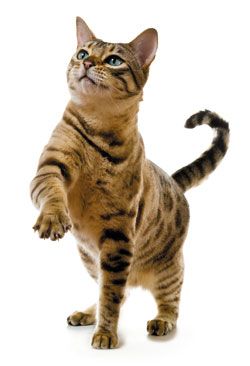AVMA amends declaw policy to define procedure as 'amputation'
Policy continues to stress veterinarians' obligation to educate cat owners on onychectomy risks.

The American Veterinary Medical Association has clarified its declaw policy by defining onychectomy as a major surgery that should be performed only after methods to prevent destructive behavior have been unsuccessful or when clawing presents an increased health risk for an owner.
“Onychectomy is an amputation and should be regarded as a major surgery,” the new policy reads. “The decision to declaw a cat should be made by the owners in consultation with their veterinarian.”
The policy holds fast to the AVMA's stance that municipalities should not have jurisdiction over licensed veterinary procedures such as declawing. Declaw opponents, including The Paw Project-an activist group that believes the procedure is inhumane-continue to work to pass municipal declaw bans. Seven cities in California, including Los Angeles, San Francisco, Burbank, Santa Monica, Berkeley, Beverly Hills and Culver City, have had declaw bans since 2009.
While AVMA policy stresses that declawing should not be the first option to prevent unwanted scratching behavior, it maintains that declawing may be an option of last resort to keep pets with families or to prevent euthanasia. “Scientific data do indicate that cats that have destructive scratching behavior are more likely to be euthanized, or more readily relinquished, released or abandoned, thereby contributing to the homeless cat population,” the policy cites.
The AVMA strongly encourages veterinarians to educate clients that scratching is a normal feline behavior. In lieu of declawing, it outlines several methods to prevent destructive scratching behavior: providing adequate scratching implements, maintaining appropriate claw care and using synthetic nail caps.
If a client and veterinarian do decide that onychectomy is the only option for a pet, the AVMA recommends full client disclosure, including medical risks associated with the procedure. “While rare in occurrence, there are inherent risks and complications with any surgical procedure including, but not limited to, anesthetic complications, hemorrhage, infection and pain. If surgical onychectomy is performed, appropriate use of safe and effective anesthetics and perioperative analgesics for an appropriate length of time is imperative.”
The policy goes further stating that pain management is necessary, not elective, and required for the procedure. The AVMA discusses acute and chronic pain as welfare concerns related to onychectomy in its 2009 “Literature Review on the Welfare Implications of Declawing of Domestic Cats.”
Visit the AVMA's website to read the new declawing policy or the AVMA's “Literature Review on the Welfare Implications of Declawing of Domestic Cats.”